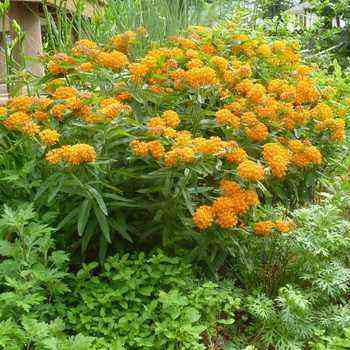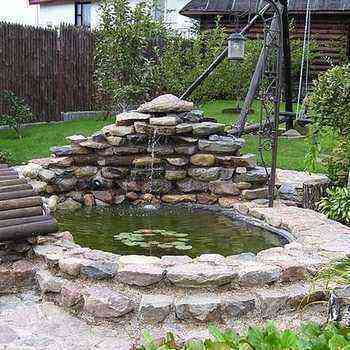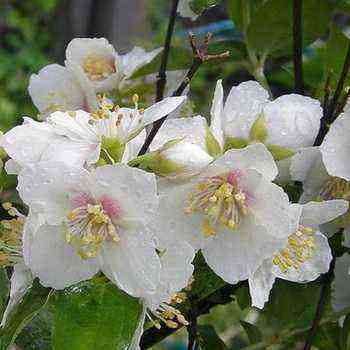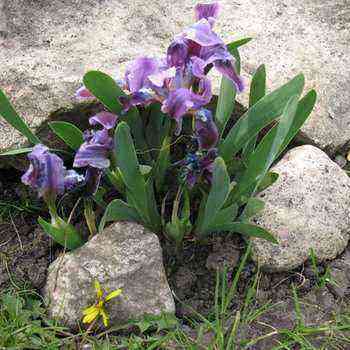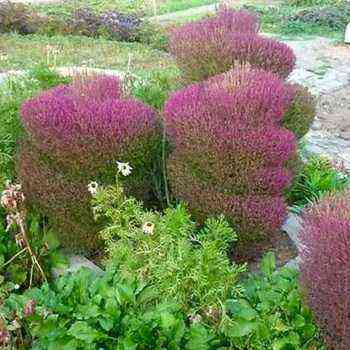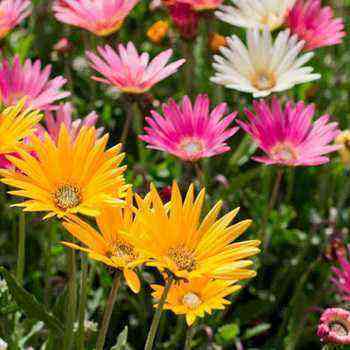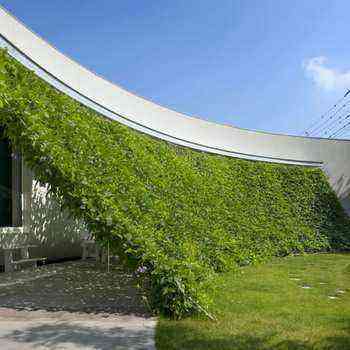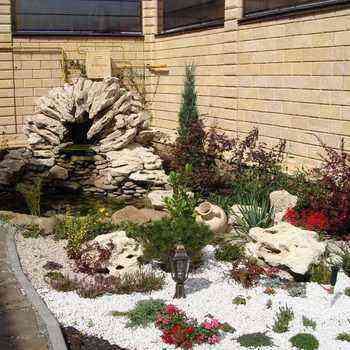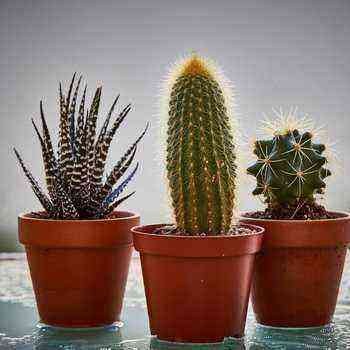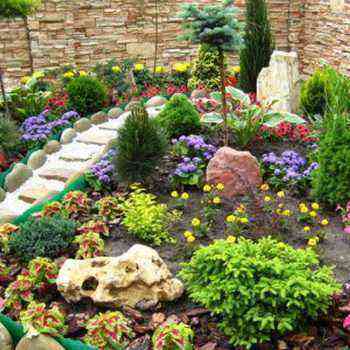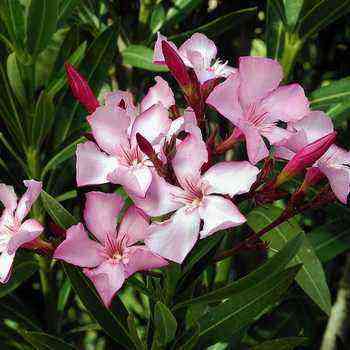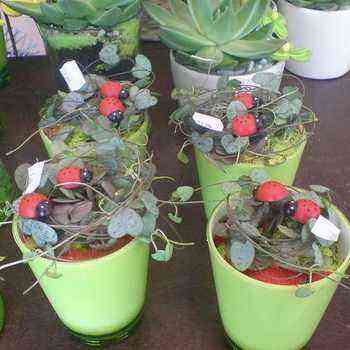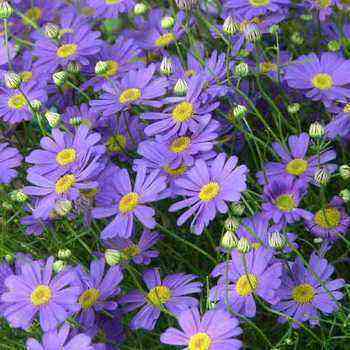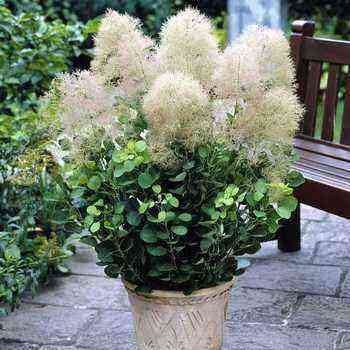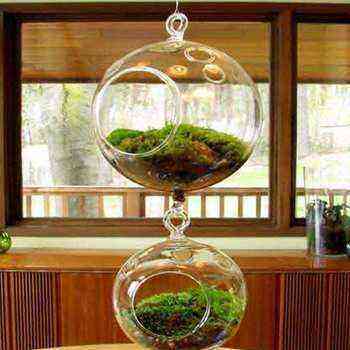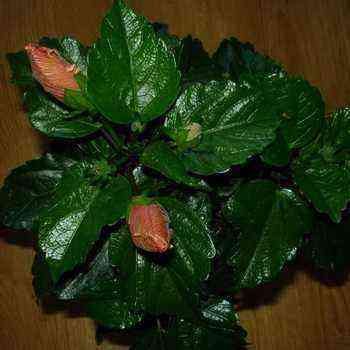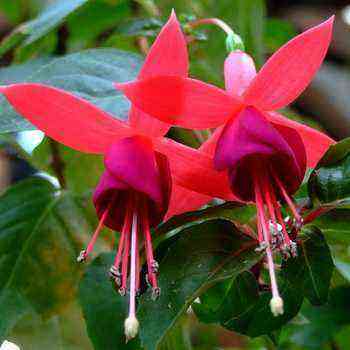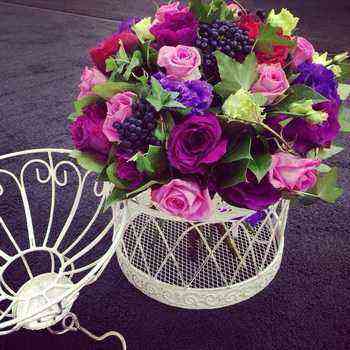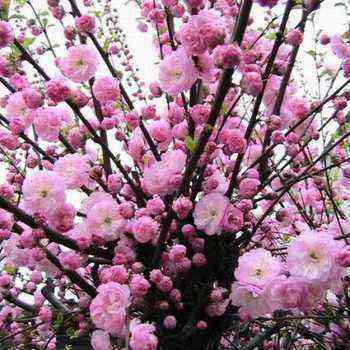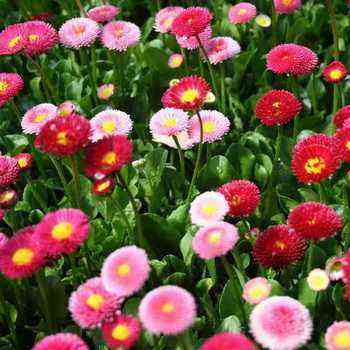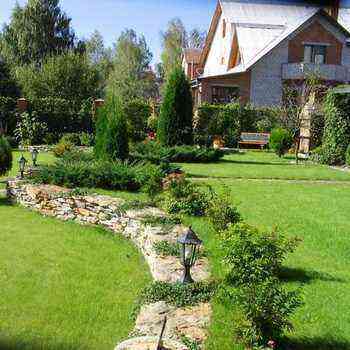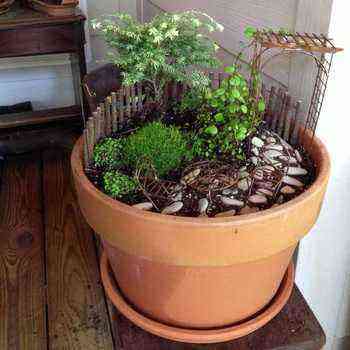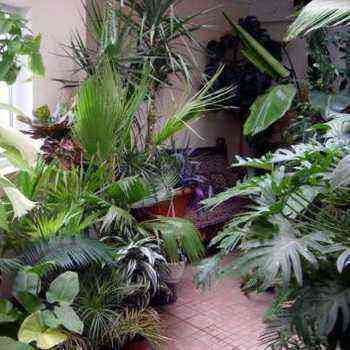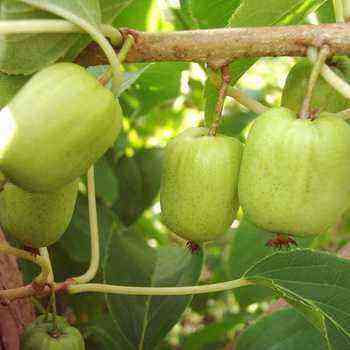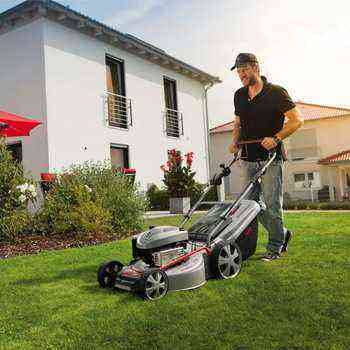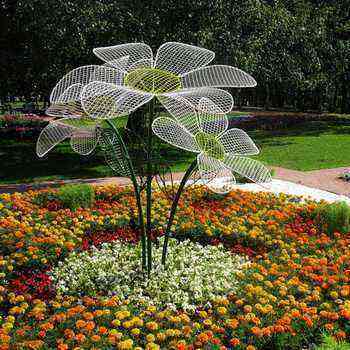The number of plant varieties that can successfully decorate the interiors of apartments and offices, has hundreds and thousands of species. Many of them are widespread, some are only making their way to popular recognition. One such beautiful stranger will be discussed in this article. The Abelia plant, which belongs to the Honeysuckle family, got its name in honor of the British physician Abel Clarke. This cold-resistant plant originates in the highlands of China and Japan, as well as India and Mexico. The Abelia flower is able to attract with its appearance throughout the whole year, and therefore has earned the great love of many gardeners. 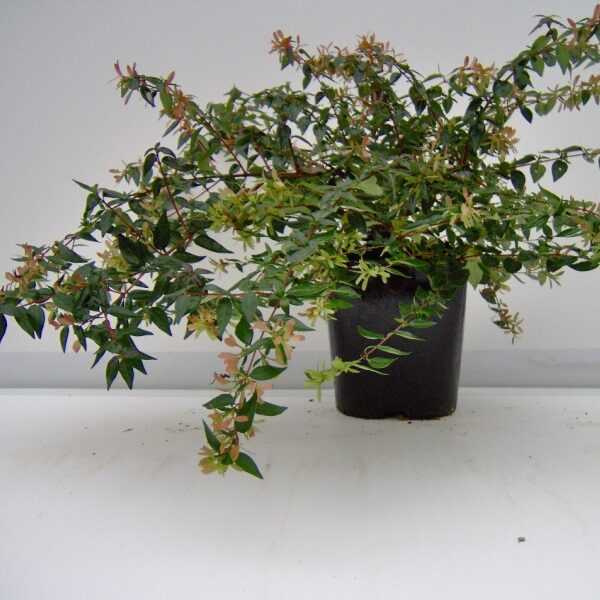

Description of abelia and her photo
We offer a detailed description of abelia as a botanical plant and tips for growing a plant at home. Abelia has small, tube-shaped flowers that most often appear on the top of the leaves and at the tips of the stem. The main shades are white and pink. Flowers are small, tubular, pink and white. With proper home care, abelia can grow up to two meters in height. It begins to bloom either in the fall or in early spring. And it blooms from October to June. The flower’s fruits are small and contain only one seed. The flower is usually planted in autumn or early spring.
You can look at the photo of abelia of various varieties and at different stages of the vegetative development of the plant: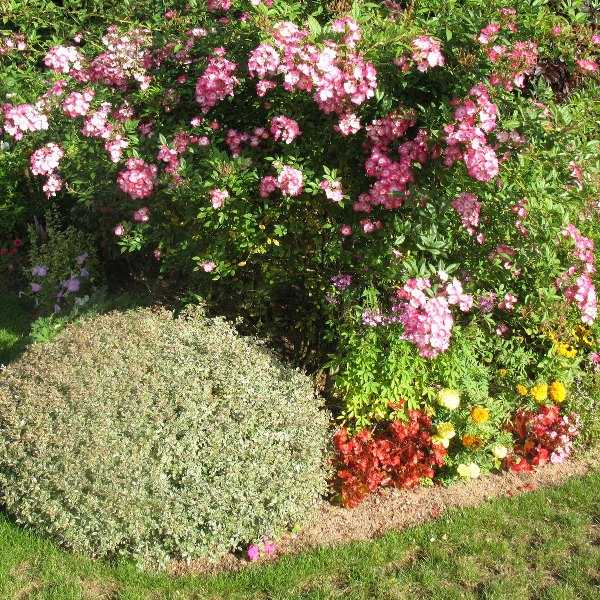

Planting and caring for abelia at home
The cultivation and reproduction of abelia does not require much knowledge in the field of gardening, which is why we can recommend it to novice amateur gardeners. In addition, Abelia is not whimsical to care for. The flower has an extraordinary, magical aroma and many are planted for this very purpose. By the way, the plant blooms very profusely and for a long time, which means that your garden will receive a worthy decoration for a long time.
Growing abelia at home requires compliance with certain temperature standards: for example, in the summer, the temperature in the room where the flower is kept and growing should not be lower than 22 degrees, in winter the minimum permissible threshold is 10 degrees. Direct sunlight is preferable, but diffused sunlight will also work. Caring for Abelia at home is reduced to the implementation of simple agrotechnical measures, including timely watering and the introduction of complexes of mineral fertilizers with a predominance of phosphorus and potassium. Do not allow waterlogging and drying out of the earthen coma. The plant should be watered sparingly, but at the same time, in no case do not allow the soil to dry out. In winter, the amount of watering should be reduced.
On warm and hot days, Abelia requires much more moisture, so it is advisable to periodically spray it with cold water.
Feeding the flower is carried out throughout the year, but in winter the fertilization procedure must be stopped. Proper care of abelia at home guarantees long-lasting abundant flowering.
Growing abelia indoors, as a rule, is advised on the windowsills, near the window facing the south. In winter, the flower may not have enough light, so it is recommended to add artificial light to natural lighting – for example, fluorescent lamps are good.
Planting abelia requires certain skills, since it reproduces mainly by cuttings, but only in the spring (after pruning). The procedure should be carried out at a temperature of at least 20 degrees. You can also plant the seeds of the plant, but their germination capacity is much less. Planting abelia with seeds is carried out in winter (in January), since it is during this period that the seeds grow the fastest. And already in the same year you can see the first flowers on the young shoot. There is another way of reproduction and planting of abelia – with the help of root shoots. Each year, shoots form around the root, which you can carefully remove and transplant into new soil.
During the growing season, do not forget that Abelia does not tolerate drafts – therefore, it is better to protect the flower from the wind during airing or remove it to another place.
It is recommended to transplant a flower only when necessary, and so for a long time it can live and exist perfectly in one place.
Abelia branches very well, therefore, unlike other species, it does not require additional pruning. In the process of growth and development, you can remove dry and damaged branches, as well as those that are ugly located in your opinion. Gardeners say that if you wish, you can periodically correct the top, but this is recommended only after flowering.
Abelia varieties
Only a few varieties of Abelia are suitable for growing at home. some of them are presented on this page. Next, you can read a description of the varieties of Abelia and see a photo of the plant in bloom.
Abelia the Korean
Abelia Korean originates in Korea, and in Russia it is distributed on the territory of Sikhote-Alin and the southern part of Primorye. The flower has pink and white petals and can grow to a height of six meters. This variety also has a pungent aromatic odor that is the hallmark of the family.
The flower grows well in moist and well-drained soil. Abelia Korean calmly tolerates the direct rays of the sun, so do not be afraid to take her out into the open. It grows on last year’s shoots, so after flowering it must be pruned.
Compared to other varieties, Korean Abelia is the most winter-hardy of all. The plant has dark green leaves of a slightly oblong shape, which acquire an orange-red hue in autumn. Her shoots are small.
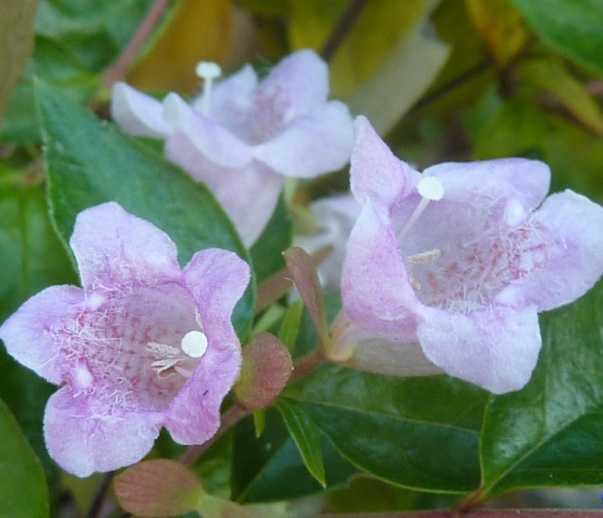
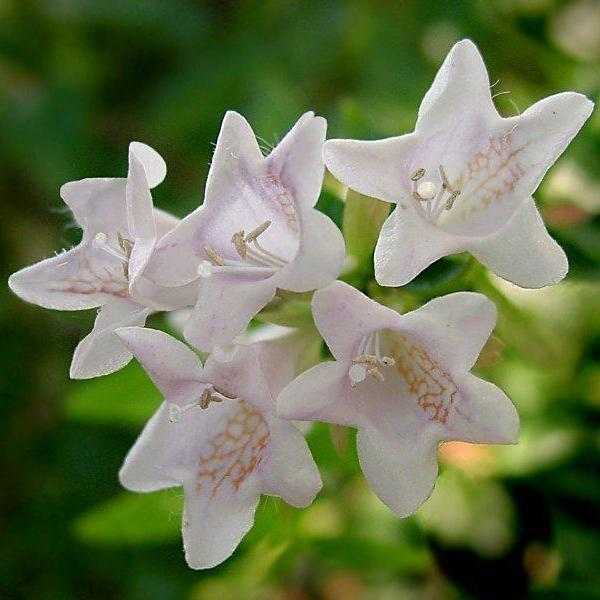
Abelia chinese
For Abelia, the Chinese native is the territory of modern China. The flower is a shrub of a pale green shade up to two meters high. The plant has a large number of drooping shoots. The leaves are dark green, slightly pointed, oval in shape. The bell-shaped flowers are white with streaks of red.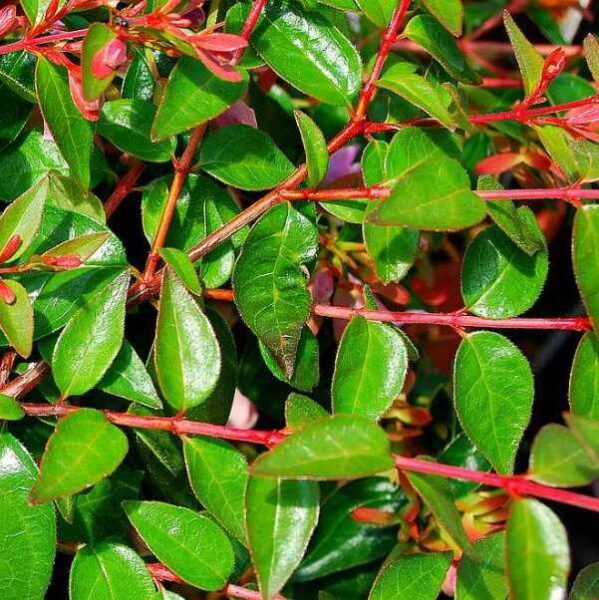

Abelia Grandiflora (large-flowered)
Abelia Grandiflora (large-flowered) can reach a height of six meters. The flowering period is in spring and autumn – from May to September. As a result, lovely flowers of different shades grow – from white to pink. It is recommended to grow this variety in well-drained soil out of direct sunlight. Large-flowered Abelia prefers soils rich in organic matter and well-hydrated.
Abelia Grandiflora reproduces by shoots, so circumcision is carried out only if absolutely necessary. And this must necessarily be the end of winter or the beginning of spring. The flowers of the large-flowered abelia have a unique aroma, and the leaves are smooth and oval with a dark green color.
The most famous varieties of Abelia Grandiflora are Abelia Edward Goucher and Abelia Variegata.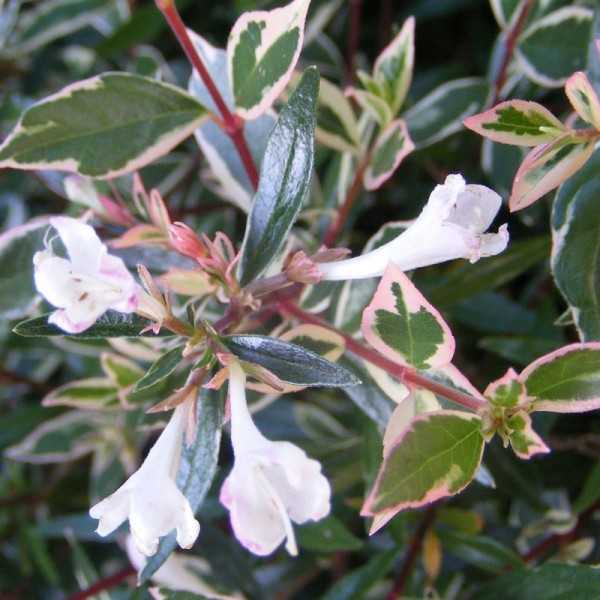
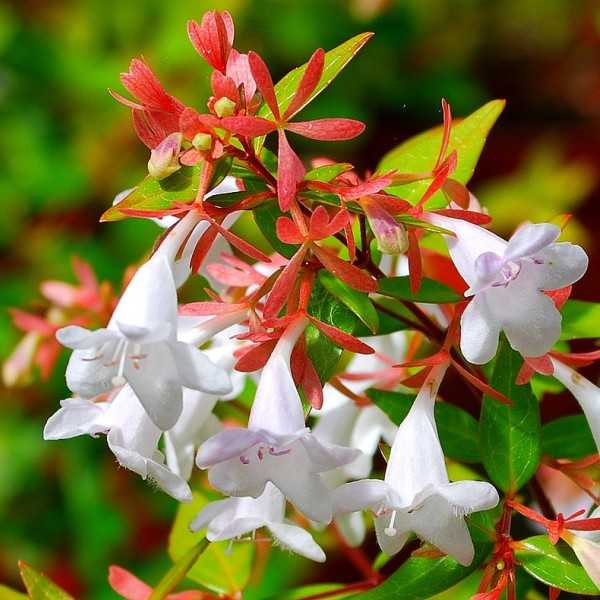
Abelia Edward Gaucher
Abelia Edward Gaucher is a beautiful stranger who differs from her fellows in picturesque flowers of lilac and pink shades with red bracts. In addition, they have a wonderful scent of lilac, which lasts throughout the year, and blooms continuously throughout the year.
Variegated abelia
With the help of variegated abelia, landscape designers and simply designers decorate the space of the room and the winter garden, especially in the cold season. It is the most popular houseplant of the Abelia varieties. In summer, they may well become part of a large space in your garden. 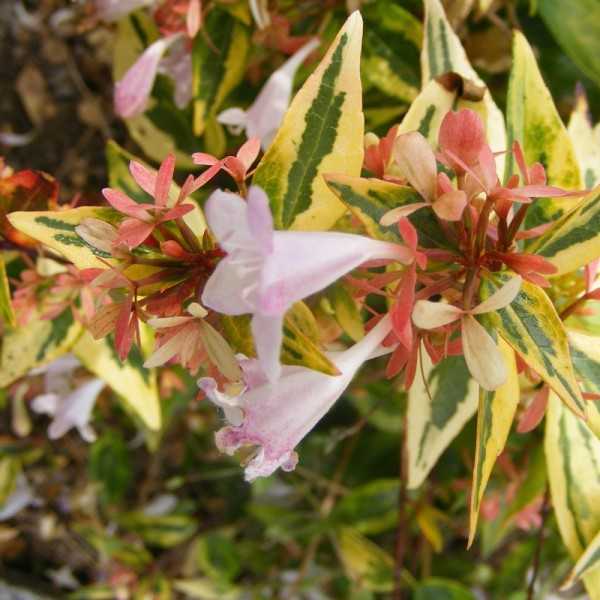
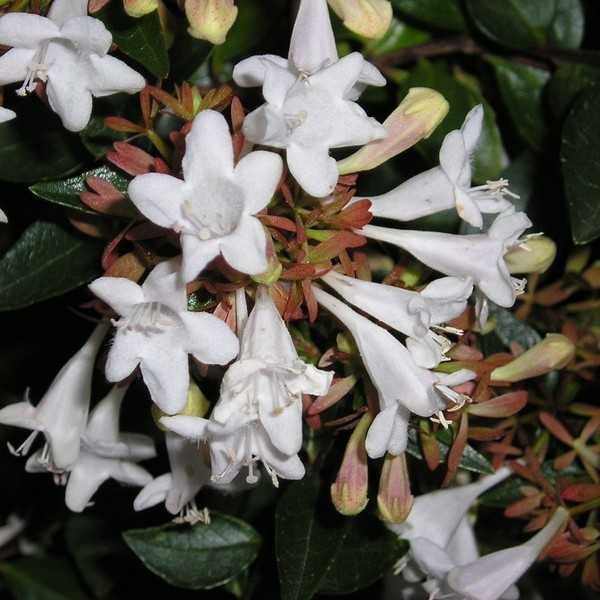
One of the representatives of this variety can be considered the abelia kaleidoscope. This is one of the youngest varieties recently bred in the United States. Its distinctive feature is the unusual color of the leaves and the dense, I would even say compact, shape. Glossy leaves are emerald in spring and golden red in the middle of summer. Closer to winter, this shade becomes even deeper and richer and subsequently remains so for the entire wintering period. Abelia Kaleidoscope blooms very profusely and for a long time, but the result is worth it. At the end of flowering, beautiful white flowers form on the buds of red and pink. This variety does not develop long shoots, so you can easily keep it in shape. The plant is not whimsical and does not require a lot of effort from you, so if you are a novice gardener, then you should try it with it. And do not forget to nourish the flower with a lot of color, so that all the richness of colors of the beautiful stranger Abelia can show itself to the fullest.
